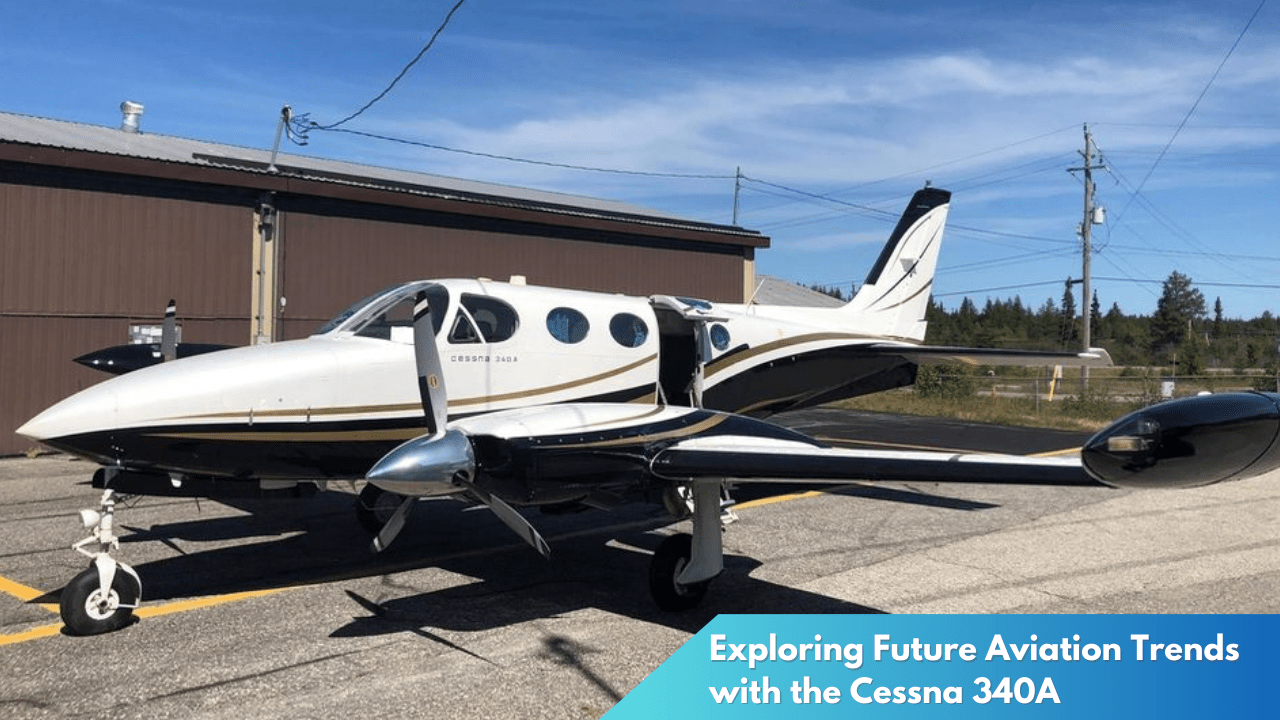Exploring Future Aviation Trends with the Cessna 340A
The aviation industry is on the cusp of a transformation, with new technologies and innovative practices redefining the skies. Amidst these changes, the Cessna 340A, a twin-engine, pressurized light aircraft, remains a versatile player in this evolving landscape. As we explore future aviation trends, the Cessna 340A serves as a bridge between traditional design and modern innovation, highlighting its significance in navigating what’s next for aviation.
Unveiling Tomorrow’s Skies: The Cessna 340A’s Role

The Cessna 340A, with its rich history and proven track record, continues to be a formidable presence in the realm of general aviation. Originally designed in the 1970s, this aircraft was pioneering in its day for offering pressurization in a light twin aircraft, allowing for higher altitude flights with greater comfort and efficiency. Its capacity to operate in diverse environments and missions, from business travel to emergency medical services, showcases its adaptability, which is crucial as the aviation industry pivots towards future demands.
As trends push for increased sustainability and efficiency in aviation, the legacy of the Cessna 340A offers valuable insights. Its design emphasizes a balance between performance and operational cost, a precursor to the modern requirement for aircraft that not only perform well but do so economically and sustainably. The Cessna 340A has shown that technological advancements can be integrated without compromising on reliability or cost-effectiveness, a vital consideration for future aircraft development.
Moreover, as the industry progresses towards more autonomous and digitally integrated systems, the experience gleaned from operating and maintaining the Cessna 340A provides a foundational understanding of merging traditional piloting with next-generation technologies. Its continued use in aviation training highlights the importance of mastering fundamental skills while embracing technological advancements, ensuring pilots are prepared for an increasingly automated future.
Innovative Trends Shaping Future Aviation Paths

One of the most significant trends shaping the future of aviation is the quest for sustainability, with electric and hybrid propulsion systems at the forefront. While the Cessna 340A itself is powered by traditional engines, it represents a platform ripe for retrofit innovations. Engineers and enthusiasts have been exploring the possibilities of modernizing older aircraft like the 340A with greener technologies, which could significantly reduce carbon emissions and operational costs, simultaneously breathing new life into these venerable machines.
The rise of urban air mobility (UAM) also sets the stage for a new era in aviation, focusing on efficient short-haul air travel. Concepts like autonomous air taxis and advanced personal air vehicles are gaining traction, and the Cessna 340A offers a glimpse of how existing aircraft can be adapted to meet these new roles. Its versatility and capacity for short takeoffs and landings make it an interesting candidate for experimentation with autonomous systems, potentially serving as a testbed for technologies that could one day power UAM fleets.
Furthermore, advancements in avionics and connectivity are expected to revolutionize how pilots interact with their aircraft. With the increasing availability of real-time data and advanced navigation systems, aviation is moving towards a more interconnected and informed future. The Cessna 340A, while equipped with foundational avionics, can be upgraded to include cutting-edge technology, illustrating how even classic aircraft can evolve to meet the demands of modern pilots, thereby playing a role in this overarching trend of technological enhancement.
As aviation trends continue to evolve, the Cessna 340A stands as a testament to the enduring value of combining proven design with forward-thinking innovation. Its adaptability and potential for modernization make it a key player in navigating the future landscape of aviation. By embracing sustainable practices, integrating advanced technologies, and exploring new roles in urban air mobility, the Cessna 340A not only maintains its relevance but also inspires the next generation of aviation pioneers to envision a more efficient and connected sky.



